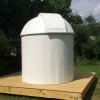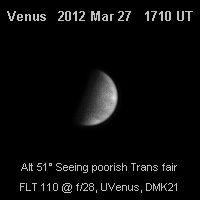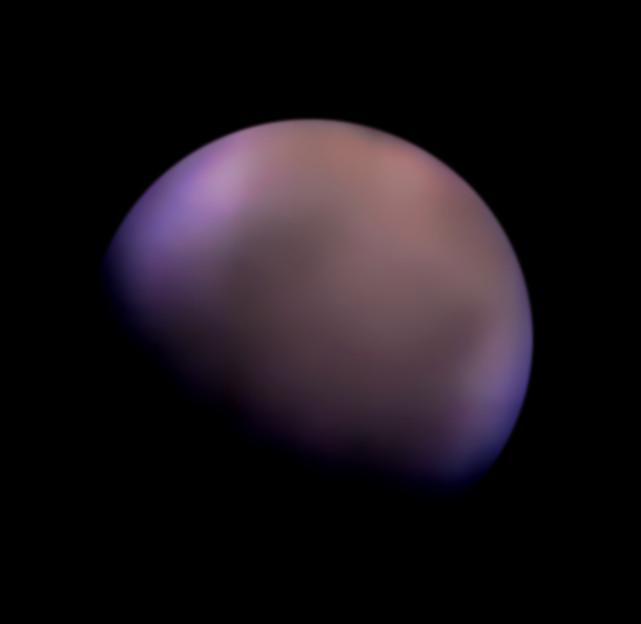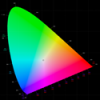
Venus-animated sequence of changes in the clouds
#1

Posted 18 August 2013 - 12:18 PM
i completed a full week of photos of Venus from 2013/08/11 to 2013/08/17 with the new Astrodon UV filter. This is a picture that shows the entire sequence and below a video of the changes recorded in the clouds ( (I have to improve it ...)
I hope you enjoy it.
See you soon
Meade LX200 16" ACF - Magzero I Nova Pla MX - Astrodon UV filter
Stefano
http://www.youtube.c...h?v=W4dwvCm1YzI
#2

Posted 18 August 2013 - 04:10 PM
#3

Posted 19 August 2013 - 12:40 AM
Nice series of images, good job!
Thanks Rolo
#4

Posted 19 August 2013 - 08:02 AM
Regards,
Steve
#5

Posted 19 August 2013 - 08:33 AM
after many attempts I realized that taking pictures during the day with the sun still high is useless though some say the opposite. Even if the planet is more 'high daylight absorbs the UV! I wait for the sun to set so 'the telescope, which is located in the basement, maintains a temperature more' lower than outside when I take him out and the turbulence is low.
In addition, IR have never been able to resume details. These in my opinion are seen well only in UV. The Astrodon filter is slightly better than the old Baader (slightly!). With both already in recovery i see the central area or arms laterlai more 'dark.
I work with Celestron Ultima Barlow lens Apo 2x, then at about 8-9 meters focal length. If you do not use the barlow the planet is much more 'small and the details dilapidated and poorly defined....
Stefano
#6

Posted 19 August 2013 - 09:45 AM
Not in my experience ... daylight does reduce contrast in the UV so you have to record with very low gamma. In my experience so long as Venus is above about 35 degrees altitude and the Sun is lower, you stand a chance of getting some sort of image. This apparition is impossible for me, at this latitude the Sun is always higher until Venus is practically on the horizon ... but I did get some reasonable results with a lot less aperture than you during the last evening apparition.after many attempts I realized that taking pictures during the day with the sun still high is useless though some say the opposite. Even if the planet is more 'high daylight absorbs the UV!
#7

Posted 19 August 2013 - 10:36 AM
Hello,Not in my experience ... daylight does reduce contrast in the UV so you have to record with very low gamma. In my experience so long as Venus is above about 35 degrees altitude and the Sun is lower, you stand a chance of getting some sort of image. This apparition is impossible for me, at this latitude the Sun is always higher until Venus is practically on the horizon ... but I did get some reasonable results with a lot less aperture than you during the last evening apparition.after many attempts I realized that taking pictures during the day with the sun still high is useless though some say the opposite. Even if the planet is more 'high daylight absorbs the UV!
i read this in a book and I have done several tests. Venus sets almost 2 hours after the sun and if I take half an hour after sunset, with Venus about 20 degrees I get the best results. west from me and 'very clear almost to the horizon. but as you say, I have not tried lowering the range. I feel.
#8

Posted 19 August 2013 - 09:46 PM
Regards,
Steve
#9

Posted 20 August 2013 - 04:51 AM
Test if you can gain a maximum and adu 50%
#10

Posted 20 August 2013 - 06:11 AM
Hmmm, I found it necessary to increase the gain to maximum because the UV image is rather dim at f/28 ... shoot 10,000 frames & stack about 10% ... Venus rotates so slowly that it doesn't matter if the movie capture takes a long time. My shooting gamma is around 0.4.Stefano, Brian, thanks for the feedback. For my last Venus attempt, I set the gamma to the usual 0.5 and cranked the gain down to nothing. Next time, I'll switch them and see what happens.
#11

Posted 20 August 2013 - 04:27 PM
#12

Posted 20 August 2013 - 07:28 PM
http://media.skyandt...n_3-20-2012.jpg
http://www.masil-ast...ontage flat.jpg
#13

Posted 21 August 2013 - 01:17 AM
But the next day something changes during the filming? example, contrast or gamma? or do you have a trick processing? I picked up so many times on the same day with the sun high and at night, and those at night are much more 'obvious. But maybe something wrong in the works for those with the sun high.
Stefano
#14

Posted 21 August 2013 - 08:38 AM
UV transmission is greatly affected by humidity and transparency. I simply set my gain so that the histogram peaks at roughly 60% in ICCapture when recording these images. Only once in 2007 did I have a 4-day run where conditions were consistent, allowing be to create a map of the clouds in UV that is today included in WinJUPOS.
The second image I linked is every UV image I took throughout a 5.5 month period in the evening apparition of 2007.
#15

Posted 21 August 2013 - 09:58 AM
i noticed that during the day the image on the monitor during the video and 'more' light. This, however, 'both to Venus and to the sky. You only adjust exposure and gain or even the range gamma and contrast in IccCapture?
Stefano
#16

Posted 21 August 2013 - 12:30 PM
#17

Posted 21 August 2013 - 12:52 PM
no, I don't mess with the camera's gamma to boost contrast, because it leads to the dreaded "onion ring" kind of artifact. I simply allow the background to be bright, and use curves in Photoshop to suppress it afterwards. The image I posted captured on 3/20/2012 was recorded when the Sun was about 20 degrees up, while Venus was 61 degrees high.
ok
As soon as i get home from the sea, for the weekend, i want to repeat on Venus as you say.
Thanks
























